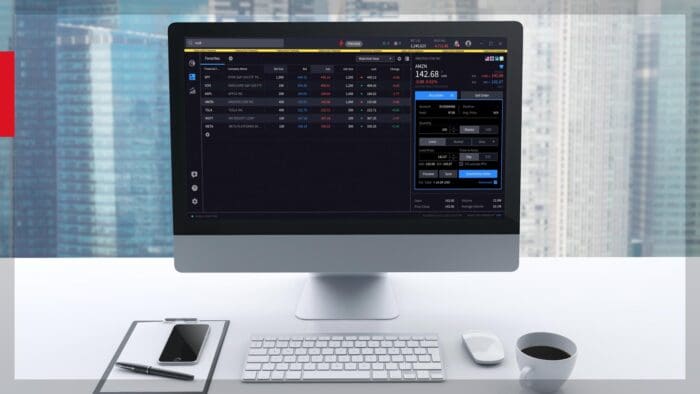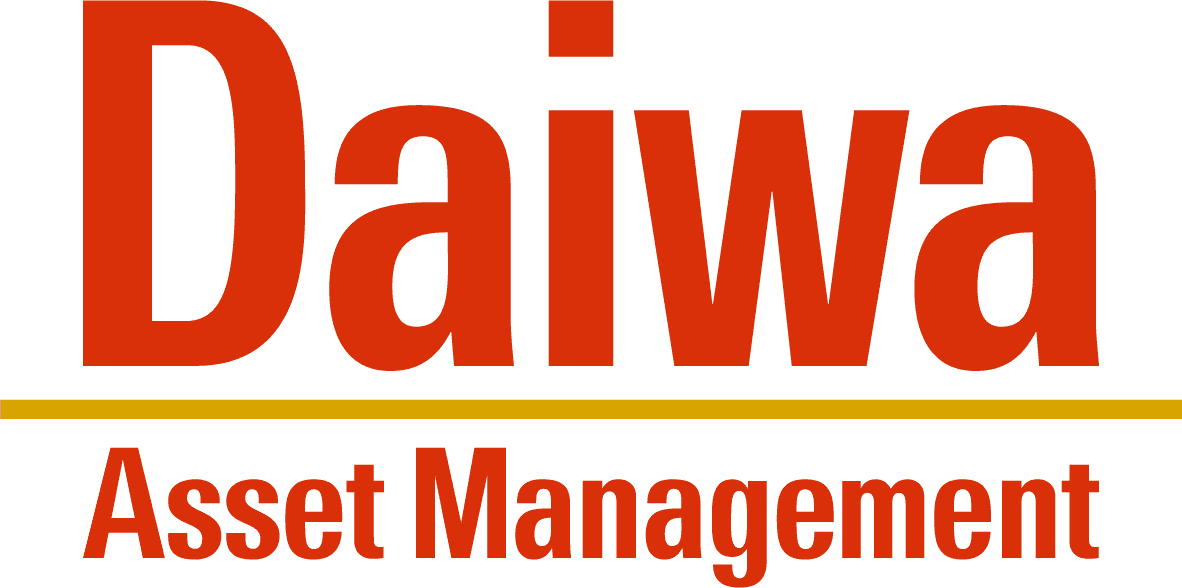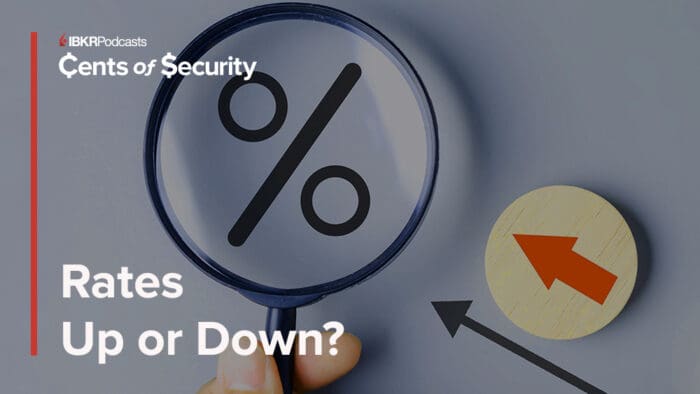Is your stock on the verge of leveling up? Join Jeff Praissman and NASDAQ’s Nicole Torskiy as they break down the mechanics, impact, and market drama behind index additions- just in time for the upcoming Russell rebalance.
Summary – IBKR Podcasts Ep. 270
The following is a summary of a live audio recording and may contain errors in spelling or grammar. Although IBKR has edited for clarity no material changes have been made.
Jeff Praissman
Hi everyone, this is Jeff Praissman, and it’s my pleasure to welcome to the IBKR Podcast NASDAQ’s Director of Economic Research, Nicole Torskiy. Welcome, Nicole. How are you?
Nicole Torskiy
I am doing great. Thanks so much for having me on again. How are you doing?
Jeff Praissman
I’m doing great. It’s great to have you back in the studio, and I’m really excited for our conversation today on index rebalancing and tracking.
Nicole Torskiy
Me too—especially with the upcoming Russell Rebalance on June 27th.
Jeff Praissman
Nicole, I think before we even start our discussion, it’s probably important to clarify for our listeners that when indexes make changes, they don’t actually trade. They just add or delete symbols or change the weights around. But the funds tracking them—the ones that hold the stocks—are the ones that actually need to trade.
Nicole Torskiy
Yeah, that’s a really important point. Indices are just rules-based benchmarks used to track asset performance. They don’t own any assets themselves. Index funds—mutual funds and ETFs—that track the index are the ones that buy and sell stocks to match the index.
Jeff Praissman
And I think it makes a lot of sense to maybe start off with a quick explanation for our listeners on why indexes rebalance.
Nicole Torskiy
Of course. So, indices are designed to represent a specific market or market segment. Index reconstitution and rebalance make sure that an index is correctly reflecting the market it’s designed to track. Indices adjust index constituents—or reconstitute—to account for changes in market capitalization, mergers and acquisitions of companies within the index, new listings, and delistings.
Without that reconstitution, the index wouldn’t be representing the market anymore. Think of the S&P 500: it was launched in 1957, but the 500 biggest companies in the U.S. today aren’t the same as they were in 1957. The index needs to change as the market changes. Then the funds tracking the index adjust their holdings—or rebalance—by buying stocks of index additions, selling stocks of index deletions, and adjusting positions in stocks with weight changes. This makes sure the tracking fund correctly reflects the performance of the index.
Jeff Praissman
So, Nicole, what are the mechanics of an index removing and adding stocks? And also, I guess more importantly, how does a fund manager replicate this virtual trade on the index’s part most efficiently to minimize tracking errors?
Nicole Torskiy
Yeah, so for each index provider, it starts with a set of rules that they use to determine what companies are eligible for the index. These rules can look at a stock’s liquidity, price, free float, sector, and how long it’s been trading. For the major U.S. market indices, after the index provider determines the eligible universe of stocks, they rank the stocks by market cap—and the company’s rank determines what index it’ll be included in.
So once ranking and index membership are decided, the index providers share this information and fund managers can prepare for the index trade. For example, the FTSE Russell indices ranked companies for the Russell 3000 on April 30th, shared preliminary addition and deletion lists starting May 23rd, and the index reconstitution is final after the close on Friday, June 27th. This means fund managers need to have replicated the index changes in their portfolios before market open on June 30th—at the June 27th closing price.
The easiest way for a fund manager to do this and minimize tracking error is to sell index deletions and buy index additions at the same time and prices as the index. Index funds trade in the closing auction on index reconstitution days.
Jeff Praissman
During these quarterly and yearly rebalances, how does the market volume change?
Nicole Torskiy
We see some pretty significant changes. Market volume shifts heavily to the closing auctions on rebalance days, as funds trade in the close to replicate the index changes. On a typical day, about 5% of volume is traded in the closing auctions. On rebalance days, we see about 15% of volume in the close for MSCI, 20% for S&P and Nasdaq-100 rebalances, and over 25% of market volume trades in the closing auction on the day of the Russell Reconstitution.
Overall, what we see is about one and a half times more value traded on a Russell Reconstitution day—but most of that activity is in the closing cross. Four times more value trades in the close than on a typical day—and nine times more volume.
Jeff Praissman
So it’s definitely a significant increase. Are the funds adding the shares immediately, or are they trading them over time to minimize market impact?
Nicole Torskiy
Great question. Index funds aren’t like traditional active mutual funds. Traditional active funds pick stocks they think will perform well and trade them secretly over time to minimize market impact and keep as much of the outperformance—or alpha—as they can. Traditional funds are measured by how much they beat the market return.
Index funds, on the other hand, are measured by how closely they match market returns. So instead of maximizing alpha like a traditional fund, index funds aim to minimize tracking error. In fact, for most large index funds, tracking error is close to zero. To do this, index funds need to replicate the index’s rules-based reconstitution as closely as possible. So funds trade all the shares they need to sell and buy immediately on Recon Day.
Jeff Praissman
And you mentioned earlier that they do this on the close. How do they trade that much more than a normal close?
Nicole Torskiy
On Recon Day, the index removes and adds stocks at the last price of the day—or the closing price. The day’s return of deletions and the overnight return of additions are going to be accounted for in the index. To correctly replicate the index change, index funds must sell removed stocks and buy added stocks at the closing price—and then hold the added stocks before market open the next day.
This results in funds needing to trade in the close to minimize tracking error. If the fund fails to trade in the close, they would still own the deleted stocks the next day and miss the overnight returns with the added stocks—resulting in tracking error.
The how part is interesting. Index funds need to execute a very large trade in a very short period of time—and they make up a significant portion of our market. Index funds—including index ETFs—are about 30% of professionally managed assets in the U.S. and half of all mutual funds.
This creates a lot of demand for index adds on rebalance days. But like we discussed, index reconstitution changes are announced ahead of time. So for a hedge fund or liquidity provider, there’s an obvious trade: buy the stocks being added to the index ahead of time, sell them to the index funds during the rebalance, and short-sell the index deletions. Forecasting additions and deletions is common, and we see liquidity in index additions pick up months in advance of a rebalance.
Jeff Praissman
Interesting, interesting. And pivoting a little bit—it seems like it’s a really big deal for a company to be added to a major index, like any of the Russell indexes you mentioned. Maybe especially for a smaller company that isn’t jumping from mid-cap to, say, large-cap, but is just being added to a major index for the first time.
What are some of the benefits for that company’s stock?
Nicole Torskiy
So it is a big deal. There’s a lot of benefit to index additions for a company. We see turnover—or liquidity—increase in new Russell 2000 additions up to six months before the annual reconstitution. And better liquidity is good for a stock. The illiquidity premium goes down with quicker trading, narrower spreads, and valuations can go up.
Plus, index addition guarantees long-term holders. Index funds don’t need to trade much outside of rebalance. So a company added to an index gains immediate long-term investment. We estimate as much as 10% of a company’s float is held by index funds for stocks in the Russell 2000—12% for the S&P 400. A small-cap in the Russell 2000 and S&P 600 could have 27% of its float held by index funds.
Jeff Praissman
And Nicole, I’d imagine conversely, if a stock’s removed from an index, it could have potentially negative effects on the price.
Nicole Torskiy
So unfortunately, yes. Just like index addition is good for a stock, removal from an index causes a large sell event—which can depress price.
Jeff Praissman
So Nicole, this has been great. Any final thoughts you’d like to leave our listeners with?
Nicole Torskiy
Sure. Indexes are an ever-changing landscape and growing more popular. Passive assets are now around 54% of all managed equity, with over $20 trillion in indexed assets globally. Understanding how indices work, trade, and how to get into an index is important.
We’ve got a key change to look forward to next year: the Russell indices are moving to a semi-annual reconstitution in June and November. So companies will have the opportunity to be added twice a year, and there’ll be one more trading day with a lot of volume in the close as funds rebalance.
Thank you so much for having me on again. This was great.
Jeff Praissman
It’s our pleasure. And I want to remind our listeners that you can find more from Nicole and Nasdaq on the education section of our website. Just click on “Education”—you’ll find podcasts, webinars, and articles from Nicole and our colleagues at Nasdaq. Until next time, Nicole, thank you so much for stopping by.
Join The Conversation
For specific platform feedback and suggestions, please submit it directly to our team using these instructions.
If you have an account-specific question or concern, please reach out to Client Services.
We encourage you to look through our FAQs before posting. Your question may already be covered!
Leave a Reply
Disclosure: Interactive Brokers
The analysis in this material is provided for information only and is not and should not be construed as an offer to sell or the solicitation of an offer to buy any security. To the extent that this material discusses general market activity, industry or sector trends or other broad-based economic or political conditions, it should not be construed as research or investment advice. To the extent that it includes references to specific securities, commodities, currencies, or other instruments, those references do not constitute a recommendation by IBKR to buy, sell or hold such investments. This material does not and is not intended to take into account the particular financial conditions, investment objectives or requirements of individual customers. Before acting on this material, you should consider whether it is suitable for your particular circumstances and, as necessary, seek professional advice.
The views and opinions expressed herein are those of the author and do not necessarily reflect the views of Interactive Brokers, its affiliates, or its employees.
Disclosure: Nasdaq
Index
Nasdaq® is a registered trademark of Nasdaq, Inc. The information contained above is provided for informational and educational purposes only, and nothing contained herein should be construed as investment advice, either on behalf of a particular security or an overall investment strategy. Neither Nasdaq, Inc. nor any of its affiliates makes any recommendation to buy or sell any security or any representation about the financial condition of any company. Statements regarding Nasdaq-listed companies or Nasdaq proprietary indexes are not guarantees of future performance. Actual results may differ materially from those expressed or implied. Past performance is not indicative of future results. Investors should undertake their own due diligence and carefully evaluate companies before investing. ADVICE FROM A SECURITIES PROFESSIONAL IS STRONGLY ADVISED.
© 2023. Nasdaq, Inc. All Rights Reserved.
Options
For the sake of simplicity, the examples included do not take into consideration commissions and other transaction fees, tax considerations, or margin requirements, which are factors that may significantly affect the economic consequences of a given strategy. An investor should review transaction costs, margin requirements and tax considerations with a broker and tax advisor before entering into any options strategy.
Options involve risk and are not suitable for everyone. Prior to buying or selling an option, a person must receive a copy of Characteristics and Risks of Standardized Options. Copies may be obtained from your broker, one of the exchanges or The Options Clearing Corporation, One North Wacker Drive, Suite 500, Chicago, IL 60606 or call 1-888-OPTIONS or visit www.888options.com.
Any strategies discussed, including examples using actual securities and price data, are strictly for illustrative and education purposes and are not to be construed as an endorsement, recommendation or solicitation to buy or sell securities.
© 2023. Nasdaq, Inc. All Rights Reserved.
Disclosure: ETFs
Any discussion or mention of an ETF is not to be construed as recommendation, promotion or solicitation. All investors should review and consider associated investment risks, charges and expenses of the investment company or fund prior to investing. Before acting on this material, you should consider whether it is suitable for your particular circumstances and, as necessary, seek professional advice.
Disclosure: Mutual Funds
Mutual Funds are investments that pool the funds of investors to purchase a range of securities to meet specified objectives, such as growth, income or both. Investors are reminded to consider the various objectives, fees, and other risks associated with investing in Mutual Funds. Please read the prospectus accordingly. This communication is not to be construed as a recommendation, solicitation or promotion of any specific fund, or family of funds. Interactive Brokers may receive compensation from fund companies in connection with purchases and holdings of mutual fund shares. Such compensation is paid out of the funds' assets. However, IBKR does not solicit you to invest in specific funds and does not recommend specific funds or any other products to you. For additional information please visit https://www.interactivebrokers.com/en/index.php?f=1563&p=mf

















What stocks are being added and deleted?
Addition and deletion lists for the Russell 3000 can be found: https://www.lseg.com/en/ftse-russell/russell-reconstitution